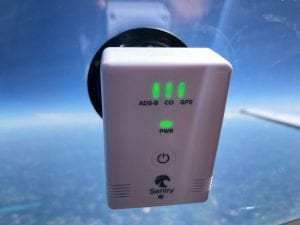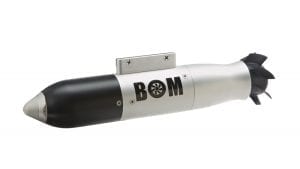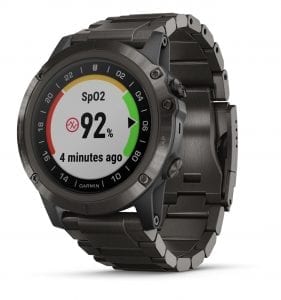EAA AirVenture Oshkosh recap for iPad pilots (it was a big year)
We just returned from a busy and exciting week at EAA AirVenture in Oshkosh, where we saw general aviation firing on all cylinders. There were over 600,000 people in attendance and 10,000 airplanes on the grounds, and lots of new product announcements. Here’s a quick recap of what we found at the event for iPad pilots.
New ADS-B receivers
Portable ADS-B receivers have been on the market for over 6 years now and continue to add new features.
Stratus 3 – Appareo released a new portable ADS-B receiver last week, building on the proven technology found in previous Stratus models. In addition to offering tight integration with ForeFlight, Stratus 3 also works with other apps, like Fltplan Go, WingX, FlyQ, iFly GPS, and others. It adds intelligent features like auto-shutoff, Smart WiFi and WiFi security. Best of all the price was lowered to $699.
Learn more: Appareo introduces Stratus 3 with more features, lower price
 ForeFlight Sentry – One year after releasing Scout, a tiny ADS-B receiver manufactured by uAvionix, ForeFlight unveiled the follow-on product at EAA AirVenture. Sentry is larger than Scout but also packs in a lot more features. Priced at $499, it includes weather, dual-band traffic, GPS and AHRS. It also includes a carbon monoxide detector, that will alert you with an audible alarm and alert in ForeFlight.
ForeFlight Sentry – One year after releasing Scout, a tiny ADS-B receiver manufactured by uAvionix, ForeFlight unveiled the follow-on product at EAA AirVenture. Sentry is larger than Scout but also packs in a lot more features. Priced at $499, it includes weather, dual-band traffic, GPS and AHRS. It also includes a carbon monoxide detector, that will alert you with an audible alarm and alert in ForeFlight.
Learn more: ForeFlight Sentry combines ADS-B receiver and CO monitor
Dynon DRX – Dynon released a low-cost ADS-B receiver as well, which offers ADS-B weather, traffic and GPS in a small package (it does not have an AHRS). It’s compatible with most apps, including ForeFlight, FlyQ and others, and retails for $395.
Learn more: Dynon DRX portable ADS-B receiver
New iPad gadgets
In addition to ADS-B receivers, there were lots of new iPad-friendly gadgets to check out at AirVenture too.
 Levil BOM – The Broadcasting Outer Module, or BOM as Levil calls, is designed to be remotely mounted under a wing. The small pod powers itself (no wiring required) and sends GPS, AHRS, ADS-B in, AOA, OAT, and air data information to the cockpit wirelessly over WiFi. Works with WingX, FlyQ, Xavion, FltPlan Go, and more.
Levil BOM – The Broadcasting Outer Module, or BOM as Levil calls, is designed to be remotely mounted under a wing. The small pod powers itself (no wiring required) and sends GPS, AHRS, ADS-B in, AOA, OAT, and air data information to the cockpit wirelessly over WiFi. Works with WingX, FlyQ, Xavion, FltPlan Go, and more.
Learn more: Levil Broadcasting Outer Module
AirText LT – The AirText LT is half the price of the original AirText, and is designed to be carried onto the airplane instead of installed. It can connect to up to 6 devices in the airplane (phone or tablet) and provides the ability to send/receive text messages in flight. Simply plug into the cigarette lighter and place the small Iridium antenna on the dash or by a side window.
Learn more: AirText introduces lower cost option
 Garmin D2 Delta PX Aviator Watch – Garmin’s new flagship watch for pilots features a Pulse Ox sensor and integrated GPS. When paired with Garmin Pilot, you can display heart rate and blood oxygen levels on the navigation bar on the map page or the Connext Dashboard screen. And as with previous Garmin aviator watches, you can use GPS data from the watch in Garmin Pilot, and remote control VIRB action cameras.
Garmin D2 Delta PX Aviator Watch – Garmin’s new flagship watch for pilots features a Pulse Ox sensor and integrated GPS. When paired with Garmin Pilot, you can display heart rate and blood oxygen levels on the navigation bar on the map page or the Connext Dashboard screen. And as with previous Garmin aviator watches, you can use GPS data from the watch in Garmin Pilot, and remote control VIRB action cameras.
Learn more: Garmin D2 Delta PX Aviator Watch
 Flight Gear Battery Pack – This new streamlined battery pack was designed by pilots, for pilots and is ideal for the cockpit. It offers 20,000 mAh of power and features 4 high-amp USB charging ports, allowing you to charge 2 iPads and a Stratus simultaneously. You can recharge the unit using a micro-USB, lighting or USB-C cable, so there’s no need to carry a proprietary charging cable.
Flight Gear Battery Pack – This new streamlined battery pack was designed by pilots, for pilots and is ideal for the cockpit. It offers 20,000 mAh of power and features 4 high-amp USB charging ports, allowing you to charge 2 iPads and a Stratus simultaneously. You can recharge the unit using a micro-USB, lighting or USB-C cable, so there’s no need to carry a proprietary charging cable.
Learn more: New Flight Gear Battery Pack is the best charging option yet
App updates
It’s been over 8 years now since the iPad was introduced, and there are no signs of slowing from the main aviation app developers.
Garmin Pilot – Version 9.4 adds a new document viewer and integration with Garmin TXi and G1000 NXi to display engine instruments and monitor operating trends. It also adds new weather products, like text MOS forecasts, Area Forecast Discussions, PIREPs in the flight profile view and the option to display base radar reflectivity on the map.
Learn more: Garmin Pilot app adds engine monitoring and document viewer
 ForeFlight – Version 10.2 adds new Day/Night app themes with automatic switching at sunset/sunrise, synthetic vision glance mode, 3D traffic in synthetic vision, jet currency tracking in the logbook and daily oceanic flight tracks on the map.
ForeFlight – Version 10.2 adds new Day/Night app themes with automatic switching at sunset/sunrise, synthetic vision glance mode, 3D traffic in synthetic vision, jet currency tracking in the logbook and daily oceanic flight tracks on the map.
Learn more: Pilot’s guide to the new features in ForeFlight 10.2
FltPlan Go – Version 4.7.10 adds support for the new Stratus 3 ADS-B receiver, improved NavLog download speed and Oceanic NavLog format for flights in oceanic airspace.
Learn more: FltPlan Go in the App Store
 Stratus Horizon Pro – Appareo released a new companion app alongside Stratus 3 that all Stratus pilots should check out. It includes a backup glass cockpit display driven by Stratus, making it a practical option to turn your iPhone into a small backup attitude indicator. The Horizon app also includes a feature called Radio Playback, which allows you to connect your iPad to your audio panel using the Stratus Audio Cable to capture ATC communications for quick ATC playback. The app also provides Stratus device management, allowing you to switch your Stratus 3 to “Open ADS-B Mode” and connect to additional apps.
Stratus Horizon Pro – Appareo released a new companion app alongside Stratus 3 that all Stratus pilots should check out. It includes a backup glass cockpit display driven by Stratus, making it a practical option to turn your iPhone into a small backup attitude indicator. The Horizon app also includes a feature called Radio Playback, which allows you to connect your iPad to your audio panel using the Stratus Audio Cable to capture ATC communications for quick ATC playback. The app also provides Stratus device management, allowing you to switch your Stratus 3 to “Open ADS-B Mode” and connect to additional apps.
Learn more: Stratus Horizon Pro app
Sporty’s Pilot Training App – Sporty’s added two new courses to its Pilot Training app last week, Flight Review and Instrument Proficiency Check (IPC). These courses are perfect for pilots looking to get current again, and the Flight Review course includes a ground training endorsement after successful course completion.
Learn more: Flight Review and IPC added to Pilot Training app
Review iPad Proficiency Check seminar slides
The editors of iPad Pilot News presented several seminars at AirVenture week on the topic of iPad Proficiency Check. Review the slides here:
- iPad charging tips for pilots—it’s all about the watts - August 29, 2025
- Apple brings blood oxygen monitoring back to Apple Watch - August 27, 2025
- iOS Update Green Light program: iOS and iPadOS 18.6.2 - August 20, 2025






Two (2) items were glaring by being omitted from the slide show:
1) The EFB/PED based briefing has three (3) potentially fatal flaws: (a) Unlike a verbal brief from FSS the pilot must interpret a lot of very complex and sometimes arcane charts and textual material. All of this takes quite a bit of time which means information conveyed (which has it’s own time lag from original creation) acquires additional time since created before launch occurs. We certainly need to review the information, but do we have “all available information” if real-time lags of an hour or more occur? Remember, we still have to get to the airport and do all necessary tasks (airplane from hangar, pre-flight, etc.) before wheels up; (b) Unlike a verbal brief there is no aural record of the briefing content nor any record that indicates we (pilots) actually received and processed the information; and finally (c) any -ANY and ALL- information we obtain from our EFB/PED is tertiary or later in the chain… It has many points where errors can occur. Several ADs and even more non-publicized errors can (and have) occurred in EFB software. For example, in the last 30 days I have discovered and reported to the vendor of the VERY popular EFB software I use FIVE (5) errors in TFR depiction/and textual information (which I verified prior to reporting them to the vendor at www[dot]notams[dot]FAA[dot]gov. Any ONE of these could have resulted in violation, and all of them could have potentially resulted in a midair.
(2) No where in the very well done slide show by Bret K. did he mention the potentially very large numbers of aircraft that are exempted from ADS/B-OUT compliance . For example, no aircraft that was produced without an electrical system is required to equip (this includes gliders, balloons, ultralights, some LSAs/ELSAs, a lot of legacy production aircraft), and any equipped aircraft that experiences an electrical system failure. Nor are any aircraft required to equip that will operate outside of Class A, B, C airspace; nor outside of the Class B veil; nor below 10,000′ in Class E (or above 10,000′ in Class E if within 2,500′ AGL) nor outside of certain Gulf of Mexico airspace. FWIW, I know several aircraft owners of SE powered aircraft who at this point have no intention to equip. I know very few glider owners who will equip.
Wow, incredible weblog layout! How lengthy have you ever been running a blog
for? yyou made running a blog look easy. The full look of your site is
great, as well as the content material!
Why is ForeFlight the app you use for slides/demo purposes? There are other apps we would not mind seeing. There are pilots out there, believe it or not, using other EFB apps. Thank you.
Sporty’s, because they sell ForeFlight and Stratus, tends to ignore most of the other EFB’s except Garmin. But, almost every “how to use” article focuses on ForeFlight, with little or very brief attention to flyQ, Wing X, Fltpln, and others. It seems that money grubbing is more important than information.
There was a new article covering FlightPlan Go and ADS-B weather put up on the site yesterday:
https://ipadpilotnews.com/2018/08/flying-with-stratus-3-and-fltplan-go-app/
Hi Tom,
Thanks for the feedback. These were slides from a seminar that I presented at Oshkosh a few weeks ago. It’s pretty interesting, I’ve been doing these iPad seminars since 2011 across the country at Sun ‘n Fun, Oshkosh and AOPA fly-ins, and I always take a quick poll to see which app the attendees are using, as that continues to be a moving target. The past few years I’d say 95% of the attendees are using either Garmin Pilot or ForeFlight, so given the short amount of time allotted for the seminar, I try to focus on tips that will most benefit those in attendance.
Bret Koebbe
I truly value your work, Great post.